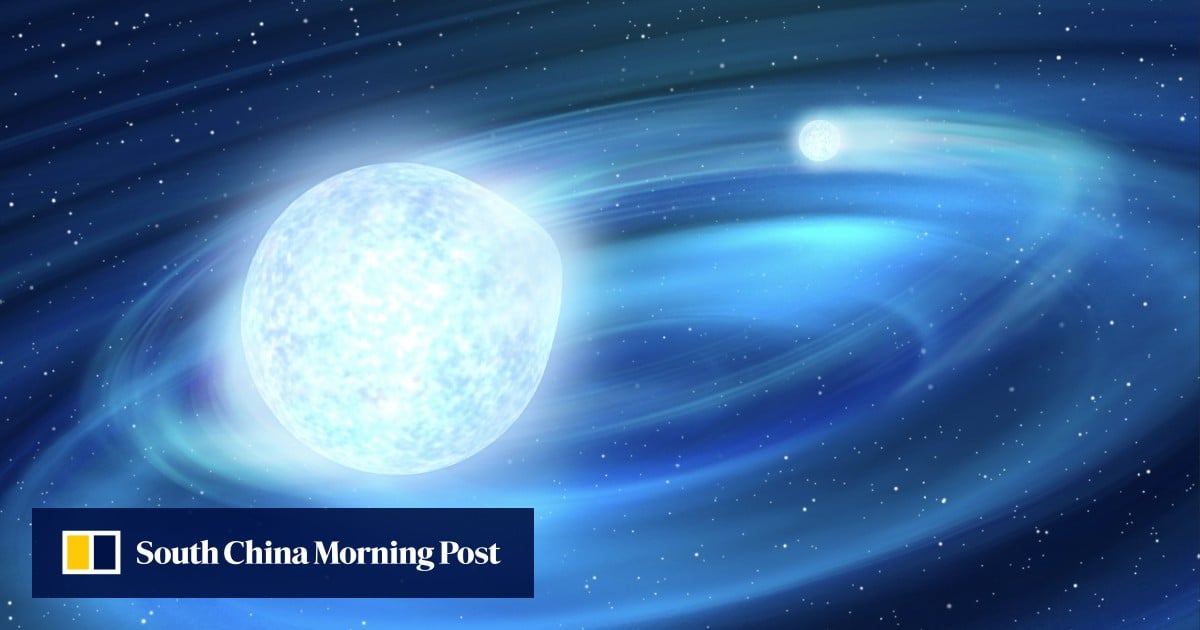
Known as a hot subdwarf, the star is just seven times the size of Earth and is smaller than Saturn, according to researchers from Tsinghua University, Yunnan Observatories as well as Australia, Europe and the US.
The tiny star and its larger white dwarf companion are about 2,760 light years from Earth. It was detected with the Tsinghua University-Ma Huateng Telescope for Survey (TMTS), according to the study published last week in the journal Nature Astronomy.
The researchers said the star, dubbed TMTS J0526B, had a mass one-third the size of our sun and burned helium with a surface temperature of 2,500 Kelvin, or 2,226.85 degrees Celsius (4,040.33 Fahrenheit).
According to the study, the star and its companion, J0526A, which is too dim to be observed directly, orbit each other every 20 minutes.
Einstein Probe: China launches powerful space X-ray observatory
Einstein Probe: China launches powerful space X-ray observatory
“While J0526A is invisible to the telescope, we know that it exists because, for one thing, it is so dense that its gravitational pull deformed J0526B from a spherical to egg-shaped structure,” the researchers said, in a statement on Tsinghua’s website.
“Such a unique binary system, including ultra-small, ultralight stars and an extremely short orbital period, had been … predicted to exist but was never detected before. Now our work [offers] the first direct, observational evidence.”
The finding supports a theory proposed by Chinese astronomers two decades ago, which predicted that tiny, lightweight stars could come into being via mass exchange within a binary system, according to the paper.
The TMTS uses an array of four optical telescopes to continuously search for transient objects in one or two areas of the sky every night. It was built at Xinglong Observatory near Beijing in 2019, with funding from the Ma Huateng Foundation and Tsinghua University.
By 2023, TMTS had obtained the photometric data of more than 27 million stars. The research team identified J0526 for further study, because it has the fastest brightness variation, making it stand out from the rest.
The researchers confirmed their TMTS observations with larger telescopes, including the Keck-I telescope in Hawaii and the Gran Telescopio Canarias in Spain’s Canary Islands.
China’s trailblazing telescope ready to train giant eye on night sky
China’s trailblazing telescope ready to train giant eye on night sky
The researchers said they expected the next generation of space-based gravitational wave detectors being built in Europe and China would be able to detect the exotic binary system.
They pointed out that the system could radiate gravitational waves at millihertz frequency as its component stars orbited around each other.
Red dwarfs were previously believed to be the smallest of all stars. They are also the most common type of star in the Milky Way.
According to a 2017 study led by University of Cambridge researchers, the smallest red dwarf ever measured was EBLM J0555-57Ab, 600 light years away and just a little bigger than Saturn.


